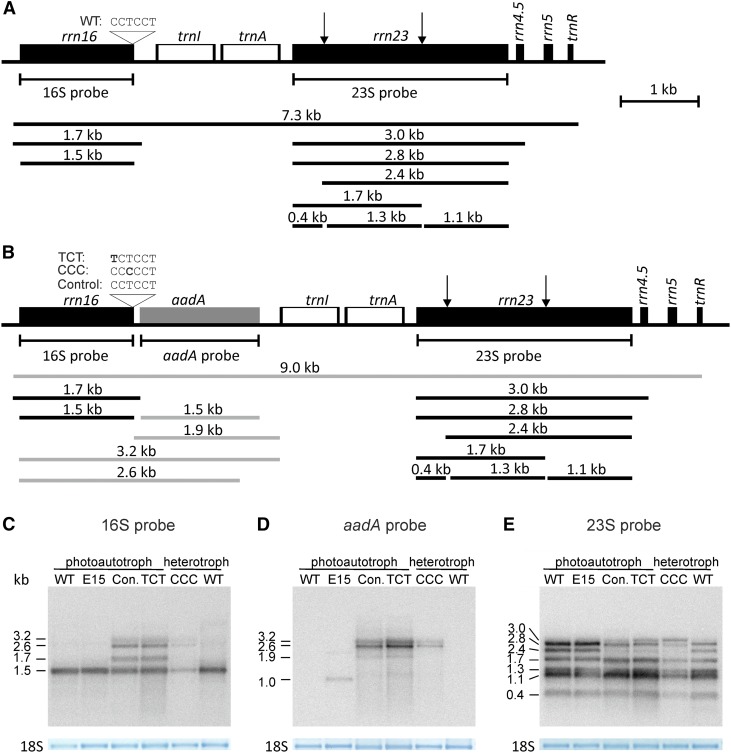Figure 4.
rRNA Accumulation and Processing in Wild-Type Plants, aadA-Expressing Transplastomic Control Lines, and aSD Mutants.
(A) Map of the plastid rRNA operon including the different rRNA precursors and mature forms of plastid rRNAs. The binding sites of the hybridization probes and the position and sequence of the aSD are indicated. Arrows indicate the position of the “hidden break” processing sites in the 23S rRNA (Nishimura et al., 2010; Tiller et al., 2012).
(B) Map of the plastid rRNA operon in the aSD mutants and the control lines with the aadA cassette inserted downstream of rrn16. The additional RNA species including the aadA cistron are shown in gray.
(C) Accumulation and processing of the 16S rRNA in wild-type plants, the wild-type-like E15 line, the control line (Con.), and the aSD mutant plants (TCT and CCC), as determined by RNA gel blot hybridization. As a loading control, the methylene blue-stained cytosolic 18S rRNA band is shown. Note that additional 16S rRNA species accumulate in the control line and the mutant lines. The 2.6- and 3.2-kb species arise from cotranscription with the aadA cassette (cf. [B]). Wild-type, E15, control, and the TCT mutant plants were grown photoautotrophically, whereas the CCC mutant and another wild-type plant were grown heterotrophically on sucrose-containing medium.
(D) Accumulation of aadA-containing RNA species. The detected RNAs include those comprising the 16S rRNA and the aadA cassette (cf. [B] and [C]). The aadA cassette in the E15 line is inserted between petA and psbJ, and the expected transcript size is ∼1.1 kb (Bock et al., 1994).
(E) Accumulation and processing of the plastid 23S rRNA. Note that the 3-kb 23S-4.5S precursor overaccumulates in the CCC mutant line. RNA gel blot analyses were performed in two biological replicates. See text for details.

